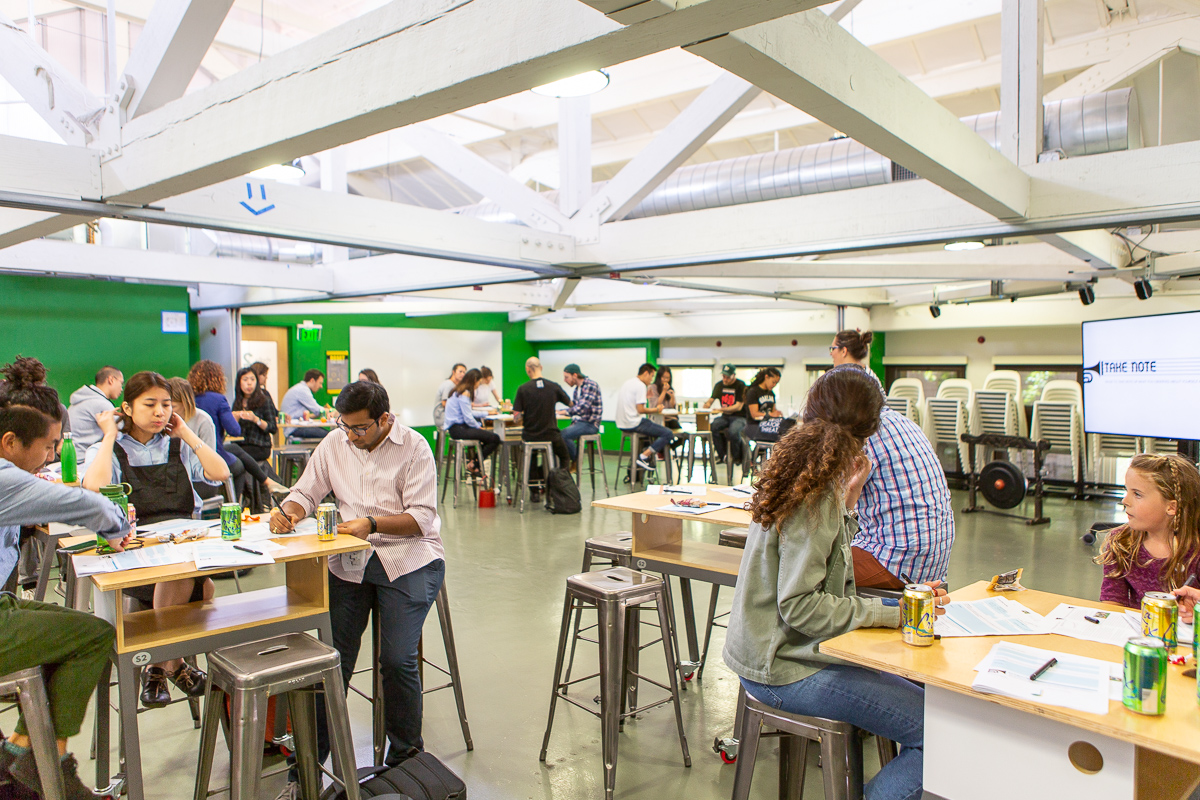On Saturday, June 9th, Emily Callaghan and Tessa Forshaw led a three-hour workshop at the Stanford d.School called “Introduction to Design Abilities.” The goal of this workshop was to provide attendees with an introspective platform to engage critically with their own design process. The reflection was facilitated by a series of guided activities that enabled participants to identify strengths, weaknesses, and opportunities for improvement.

To frame the discussion, the design process was compared to a song. Within this song, different design abilities, or skills, were the musical notes. There are a total of 8 musical notes or design abilities, which are as follows:
1. Design Your Design Work
Recognizing a problem as a design challenge and bringing together resources, including people and materials, to solve it.
2. Experiment Rapidly
Brainstorming many possibilities is a key piece of design, and this ability captures that concept of rapid idea generation.
3. Learn From Others
Acknowledging and seizing opportunities to learn from different stakeholders and environments to better understand the problem and develop responsive solutions.
4. Communicate Deliberately
Communicating is central to team dynamics, sharing the product’s story, and building relationships with other stakeholders.
5. Build and Craft Intentionally
Being aware of the tools needed for a successful project in your area of expertise to deliver high-quality work that matches the project needs.
6. Move Between Concrete and Abstract
Navigating deftly between high-level project details such as stakeholders and goals and zooming in on minute details like product specifications.
7. Synthesize Information
Bringing together information from many sources and mining it for insights and opportunities.
8. Navigate Ambiguity
Designing and ambiguity and design go hand and hand. To address this, acknowledge uncertainty as it arises, become comfortable working in ambiguous spaces, and come up with solutions to manage this ambiguity.

In practice, each design ability or note is blended together in unique ways by each designer as they discover their own brilliant combinations through experience and practice.
One activity highlight was “Know your notes.” In this exercise, participants reflected on the different design abilities and categorized them into one of the three groups. The three groups were range, which are strengths; reach, which are areas of improvement; and riff, which are strengths of colleagues that open opportunities for collaboration. Through this exercise, participants took a snapshot of their design practice to build upon strengths, shore up weaknesses, and better leverage collaborators possessing complementary skills.
As you reflect on your own design practice, we encourage you to consider these design abilities. When iterating and reflecting, remember that struggle and growth go hand in hand. As Emily Callaghan puts it, “the area of productive struggle is where you find the most challenge and personal growth.” In other words, appreciate the struggle as you are working to improve and refine your personal design process because this is where you will find the greatest growth and improvement.
Post Written By: Archana Bharadwaj
Photos By: Jennifer Hale

